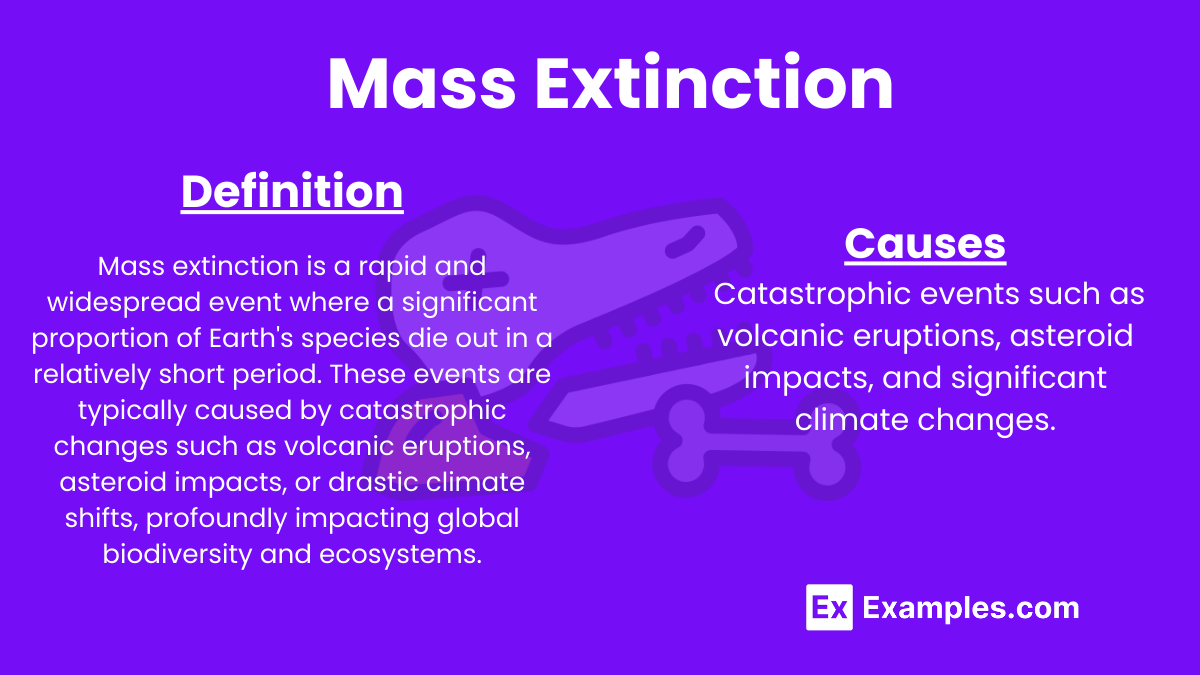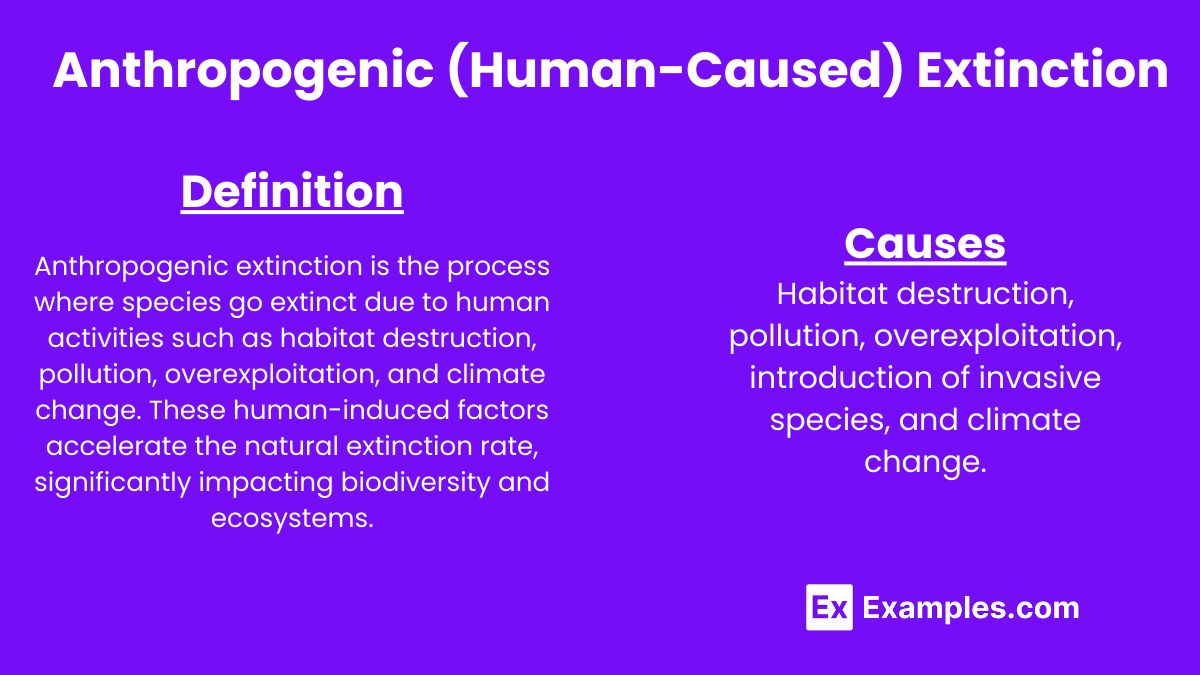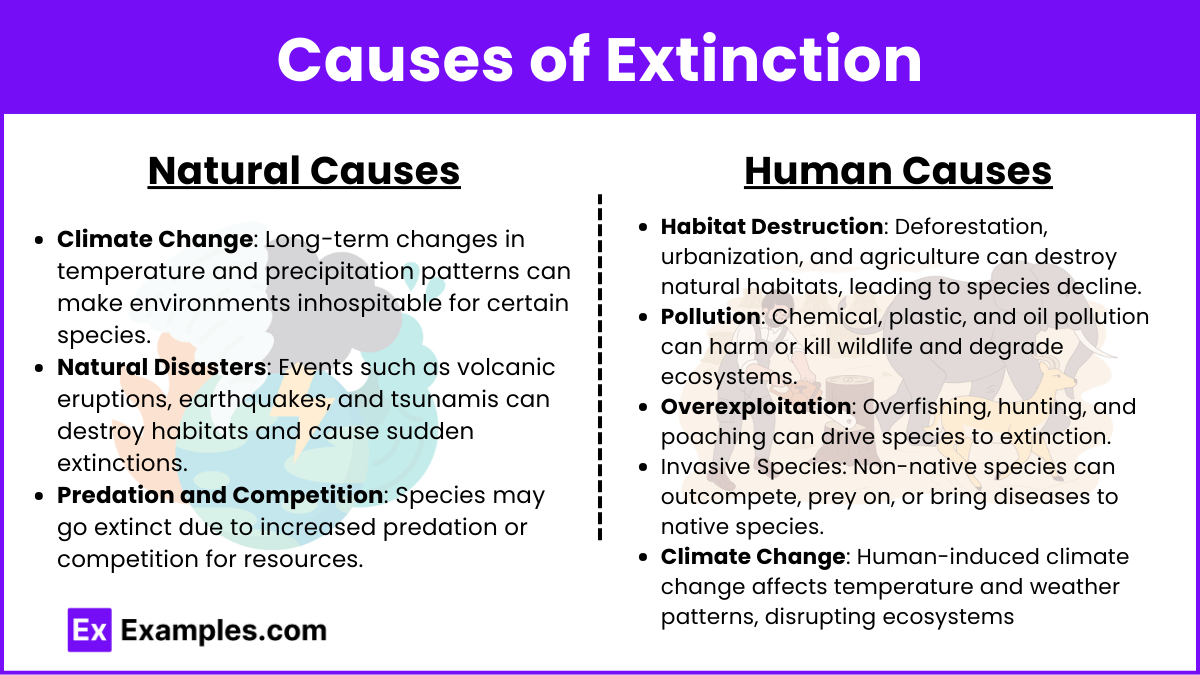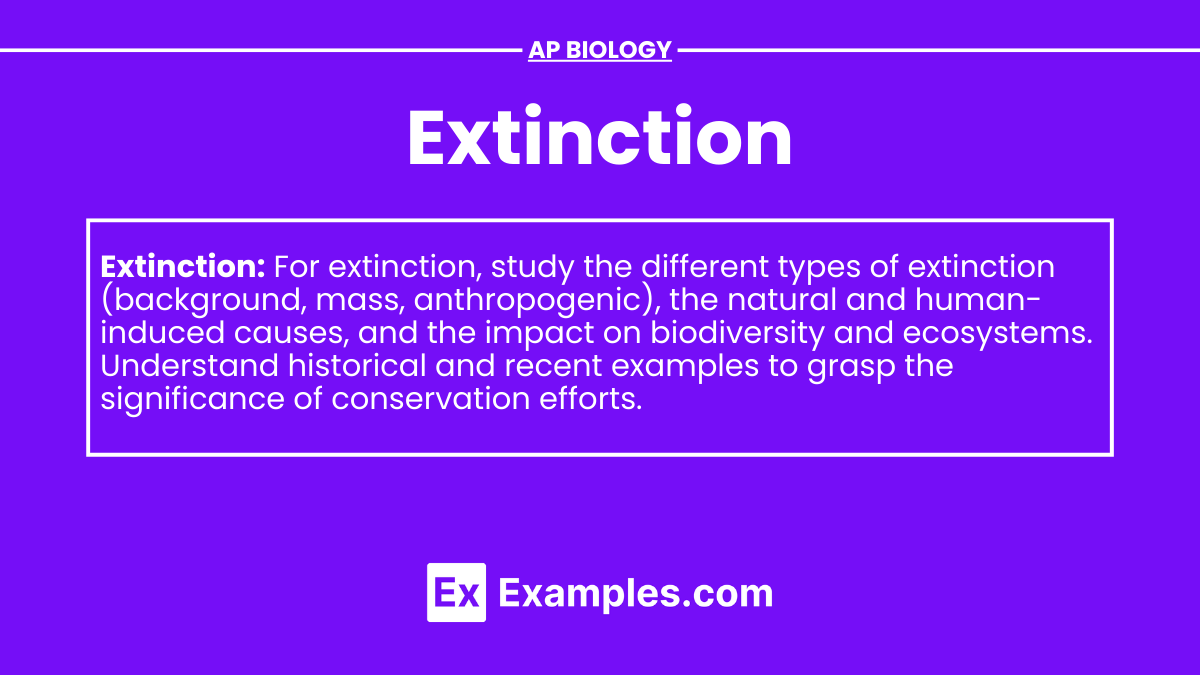In the AP Biology, understanding extinction is crucial for grasping biodiversity and ecological balance. Extinction occurs when a species ceases to exist, driven by natural causes like climate change and human activities such as habitat destruction and pollution. Recognizing different types of extinction—background, mass, and anthropogenic—helps explain the historical and ongoing impacts on ecosystems. Mastering this topic provides insight into the evolutionary history of life on Earth and the importance of conservation efforts.
Learning Objectives
By studying extinction, you will understand the causes and types of extinction, including background, mass, and anthropogenic. You will identify the impact of natural and human-induced factors like climate change, habitat destruction, and invasive species on biodiversity. By examining historical and recent examples of extinct species, you will appreciate the consequences of extinction on ecosystems. This knowledge will enable you to explain the significance of conservation efforts and the evolutionary history of life on Earth.
Types of Extinction
Background Extinction

Definition: The standard rate of extinction in Earth's biological history, occurring naturally over time.
Causes: Natural events such as predation, disease, and competition.
Mass Extinction

Definition: A rapid and widespread decrease in the biodiversity on Earth, characterized by the extinction of a large number of species in a relatively short period.
Causes: Catastrophic events such as volcanic eruptions, asteroid impacts, and significant climate changes.
Anthropogenic (Human-Caused) Extinction

Definition: Extinctions resulting from human activities.
Causes: Habitat destruction, pollution, overexploitation, introduction of invasive species, and climate change.
Causes of Extinction

Natural Causes
Climate Change: Long-term changes in temperature and precipitation patterns can make environments inhospitable for certain species.
Natural Disasters: Events such as volcanic eruptions, earthquakes, and tsunamis can destroy habitats and cause sudden extinctions.
Predation and Competition: Species may go extinct due to increased predation or competition for resources.
Human Causes
Habitat Destruction: Deforestation, urbanization, and agriculture can destroy natural habitats, leading to species decline.
Pollution: Chemical, plastic, and oil pollution can harm or kill wildlife and degrade ecosystems.
Overexploitation: Overfishing, hunting, and poaching can drive species to extinction.
Invasive Species: Non-native species can outcompete, prey on, or bring diseases to native species.
Climate Change: Human-induced climate change affects temperature and weather patterns, disrupting ecosystems.
Examples of Extinction
Example 1: Dinosaurs
Cause: Likely an asteroid impact and volcanic activity leading to climate change.
Impact: End of the Cretaceous period, wiping out about 75% of Earth's species, including all non-avian dinosaurs.
Example 2: Dodo Bird
Cause: Overhunting by humans and introduced predators like rats and pigs.
Impact: Extinct by the late 17th century, it was a flightless bird endemic to Mauritius.
Example 3: Passenger Pigeon
Cause: Overhunting and habitat destruction.
Impact: Once abundant in North America, the last known individual died in 1914.
Example 4: Woolly Mammoth
Cause: Climate warming and overhunting by humans.
Impact: Went extinct around 4,000 years ago, with the last populations isolated on Arctic islands.
Example 5: Tasmanian Tiger (Thylacine)
Cause: Hunting, disease, and habitat destruction.
Impact: The last known individual died in captivity in 1936, native to Tasmania.
Multiple Choice Questions
Question 1: Which of the following is an example of a mass extinction event?
A. The extinction of the dodo bird
B. The Cretaceous-Paleogene (K-Pg) extinction
C. The extinction of the Tasmanian tiger
D. The decline of the passenger pigeon
Answer: B. The Cretaceous-Paleogene (K-Pg) extinction
Explanation: The Cretaceous-Paleogene (K-Pg) extinction is a mass extinction event that resulted in the loss of about 75% of Earth's species, including non-avian dinosaurs.
Question 2: What is the primary cause of the extinction of the passenger pigeon?
A. Climate change
B. Overhunting and habitat destruction
C. Natural disasters
D. Introduction of invasive species
Answer: B. Overhunting and habitat destruction
Explanation: The passenger pigeon went extinct due to extensive overhunting and the destruction of its natural habitat in North America.
Question 3: How do invasive species contribute to the extinction of native species?
A. By increasing genetic diversity
B. By reducing pollution
C. By outcompeting, preying on, or bringing diseases to native species
D. By promoting habitat restoration
Answer: C. By outcompeting, preying on, or bringing diseases to native species
Explanation: Invasive species can cause the extinction of native species by outcompeting them for resources, preying on them, or introducing new diseases.


